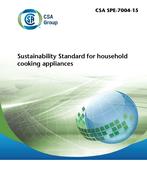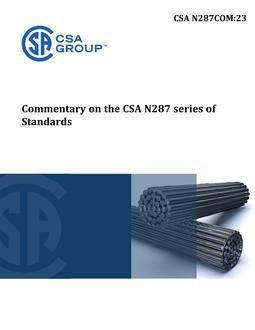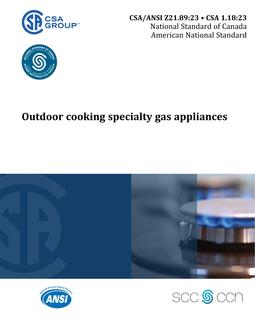
CSA SPE-7004-15
- Comments Off on CSA SPE-7004-15
- CSA
This is the first edition of AHAM 7004/CSA SPE-7004/UL 7004, Sustainability Standard for household cooking appliances. This is a non-consensus document; it will be processed in accordance with procedures accredited by ANSI and SCC with the intent of being published as a consensus document.
The environmental performance of cooking home appliances is evaluated on the single environmental attribute of energy consumption during use. This Standard takes a broader, multi-attribute, and more holistic approach to assessing the environmental impacts of cooking home appliances. The intention of this Standard is that it will not promote environmental performance at the expense of consumer relevant product performance. Product performance may be revisited in future editions if performance standards are developed. The multi-attribute approach was developed using life-cycle assessment (LCA) information along with other key factors such as hot-spot or hot-button analyses influencing product environmental performance. This approach, detailed in Annex A, determined the environmental attributes of cooking appliances for inclusion in this Standard.
All parties have agreed that this Standard will be reviewed at the time a new U.S. Department of Energy or Natural Resources Canada minimum energy standard change occurs or within three years from the date the AHAM-CSA-ULe Preliminary Requirements Standard is published. Many of the measurements included within this Standard are unique and have not been conducted on other appliance categories. The Task Force that drafted this Standard expects to learn much from the application of this First Edition in the coming years. The use of this Standard, self-assessment by cooking appliance manufacturers, and external third-party assessment will be used to improve the Standard in drafting the second and subsequent editions.
This Standard was written specifically for products placed on the market in the United States and Canada. At the present time, a number of the calculations are based on systems specific to North America. This Standard was prepared by the Task Force on AHAM-CSA Group-UL Sustainability Standard for Household Cooking Appliances, under the jurisdiction of the AHAM Major Appliance Engineering Council, CSA Strategic Steering Committee on Business Management and Sustainability, and UL Environment.
Interpretations
The interpretation by the standards development organization of an identical or equivalent standard is based on the literal text to determine compliance with the Standard in accordance with the procedural rules of the standards development organization. If more than one interpretation of the literal text has been identified, a revision is to be proposed as soon as possible to each of the standards development organizations to more accurately reflect the intent.
Scope
1.1 This Standard covers the following products: (a) built-in cook tops: (i) electric powered: (1) radiant; (2) halogen; (3) coil; (4) induction; and (5) grill; and (ii) gas powered: (1) sealed burner; and (2) open burner; and (b) built-in ovens: (i) electric powered: (1) single cavity; and (2) multiple cavity; and (ii) gas powered: (1) single cavity; and (2) multiple cavity; and (c) ranges: (i) electric powered: (1) free standing; (2) built-in; (3) single cavity; and (4) multiple cavity; and (ii) gas powered: (1) free standing; (2) built-in; (3) single cavity; and (4) multiple cavity; and (iii) hybrid gas/electric: (1) free standing; (2) built-in; (3) single cavity; and (4) multiple cavity. The above product categories include technologies such as convection, non-convection, and steam products, but specifically exclude microwave technology.
1.2 This Standard does not cover any microwave oven product, or any product that includes a microwave oven in combination with any of the products listed in Clause 1.
1.3 This Standard does not include directions for conformity assessment or the use of a mark/seal of conformity assessment.
1.4 In this Standard, “shall” is used to express a requirement, i.e., a provision that the user is obliged to satisfy in order to comply with the Standard; “should” is used to express a recommendation or that which is advised but not required; and “may” is used to express an option or that which is permissible within the limits of the Standard. Notes accompanying clauses do not include requirements or alternative requirements; the purpose of a note accompanying a clause is to separate from the text explanatory or informative material. Notes to tables and figures are considered part of the table or figure and may be written as requirements. Annexes are designated normative (mandatory) or informative (non-mandatory) to define their application.
Product Details
- Edition:
- 1st
- Published:
- 02/01/2015
- ISBN(s):
- 9781771399036
- Number of Pages:
- 56
- File Size:
- 1 file , 1.5 MB
- Product Code(s):
- 2423617, 2423617, 2423617



